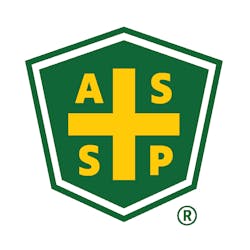ASSP Responds to Rising Worker Deaths
The American Society of Safety Professionals (ASSP) is urging employers to be more active in adopting voluntary national consensus standards and implementing safety and health-management systems in response to newly released fatality data from the U.S. Bureau of Labor Statistics (BLS).
The BLS reported that 5,333 fatal work injuries occurred in 2019, a 2 percent increase from the previous year’s total of 5,250 and the most on-the-job deaths since 2007. It is the fifth time in the past six years that fatal occupational injuries increased.
“With many safety advancements being readily available to employers nationwide, it’s troubling that we’re continuing to see higher numbers of worker fatalities,” said ASSP president Deborah Roy, M.P.H., RN, COHN-S, CSP, CIT, FASSP, FAAOHN. “Most occupational incidents are preventable given today’s technologies and proven safety and health strategies.”
Voluntary consensus standards promote best practices and prevent worker injuries, illnesses, and fatalities–especially valuable during this time of low activity in regulatory development at the federal level.
ASSP is the secretariat for many standards committees in the United States and worldwide, forming expert groups and ensuring standards are developed and revised in accordance with requirements from the American National Standards Institute (ANSI) and International Organization for Standardization (ISO).
While regulatory entities like OSHA set workplace safety standards mandated by law, voluntary consensus standards provide guidelines that safety-minded organizations choose to implement because of their merit. Consensus standards reflect diverse viewpoints and represent state-of-the-art practices and technologies while addressing gaps where no regulatory standard exists in today’s rapidly changing environment.
“Voluntary national consensus standards can transform safety programs from compliance-based cost centers to corporate sustainability initiatives that save lives and positively impact the organization’s bottom line,” Roy said.
ASSP believes organizations should anchor their efforts to improve workplace safety in safety and health management systems such as ANSI/ASSP Z10.0-2019. Z10 is a blueprint for any company to develop and administer a safety and health management system.
It establishes a safe operational foundation by ensuring that critical processes are integrated. Customized elements are based on the organization’s characteristics such as hazard exposures, risk levels, industry type, and business processes.
The BLS fatality data comes on the heels of the department’s annual injuries and illnesses report from November that showed a stagnation of nonfatal workplace injuries and illnesses in 2019. It was the second consecutive year that the incidence rate did not decrease.
“Strong workplace cultures that bring together management and employees while including safety and health climates must become a priority for all companies and organizations,” Roy said. “ASSP will continue to push for better protection of workers to ensure that everyone returns home safe to their families every day.”
Source: ASSP
